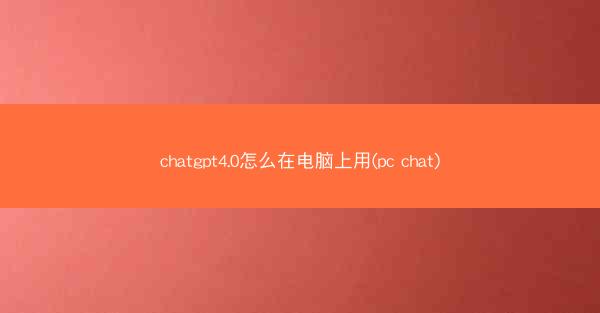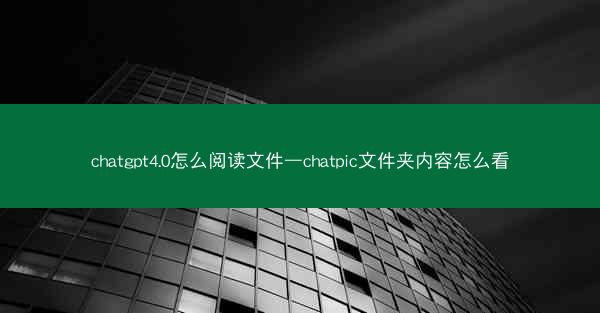
ChatGPT 4.0 is the latest iteration of the popular language model developed by OpenAI. Building upon the success of its predecessors, ChatGPT 4.0 has been designed to provide more accurate and contextually relevant translations. This article aims to explore the capabilities of ChatGPT 4.0 in translating English literature, highlighting its strengths and potential applications.
Understanding the Translation Process
The translation process involves converting the meaning of a text from one language to another while maintaining the original intent and style. ChatGPT 4.0 utilizes deep learning algorithms to understand the nuances of language and produce translations that are both accurate and natural-sounding. This is achieved through the model's ability to learn from vast amounts of text data, enabling it to recognize patterns and context.
Accuracy and Contextual Understanding
One of the key strengths of ChatGPT 4.0 is its high level of accuracy. The model has been trained on a diverse range of English literature, including novels, poems, and scholarly articles, which allows it to capture the subtleties of language and convey the intended meaning effectively. For example, when translating a complex sentence, ChatGPT 4.0 can identify the subject, verb, and object, ensuring that the translation maintains the original structure and meaning.
Preservation of Style and Tone
In addition to accuracy, ChatGPT 4.0 also excels in preserving the style and tone of the original text. This is crucial when translating literature, as the style and tone often contribute significantly to the overall impact of the work. Whether it's a humorous passage or a poignant moment, ChatGPT 4.0 is capable of translating these elements with precision, ensuring that the translated text resonates with readers in the target language.
Handling Specialized Terminology
English literature often contains specialized terminology, which can be challenging to translate accurately. ChatGPT 4.0's ability to learn from a wide range of texts allows it to recognize and translate these terms effectively. For instance, when translating a scientific paper or a legal document, the model can ensure that technical terms are translated correctly, maintaining the integrity of the original content.
Adapting to Different Text Types
ChatGPT 4.0 is versatile in its ability to translate various types of English literature. Whether it's a short story, a play, or a scholarly article, the model can adapt its translation strategy to suit the specific text type. This adaptability ensures that the translated text remains coherent and engaging, regardless of the original format.
Limitations and Challenges
Despite its impressive capabilities, ChatGPT 4.0 is not without its limitations. One challenge is the potential for errors in translations, especially when dealing with ambiguous or culturally specific language. Additionally, the model may struggle with texts that require a deep understanding of a particular subject matter, as its knowledge is based on patterns learned from existing data.
Conclusion
ChatGPT 4.0 represents a significant advancement in the field of machine translation. Its ability to translate English literature with high accuracy and preserve the original style and tone makes it a valuable tool for researchers, translators, and anyone interested in accessing English literature in other languages. While there are still challenges to be addressed, the potential of ChatGPT 4.0 to revolutionize the way we engage with translated literature is undeniable.













 chatgpt4.0怎么装windows10电脑上,pcattcp安装
chatgpt4.0怎么装windows10电脑上,pcattcp安装 chatgpt4.0怎么装iphone、安装chattr
chatgpt4.0怎么装iphone、安装chattr chatgpt4.0怎么装iphone、chat怎么下载
chatgpt4.0怎么装iphone、chat怎么下载 chatgpt4.0怎么装iphone(安装chattr)
chatgpt4.0怎么装iphone(安装chattr) chatgpt4.0怎么装、cheto怎么安装
chatgpt4.0怎么装、cheto怎么安装 chatgpt4.0怎么转化为中文;chatwork怎么修改语言
chatgpt4.0怎么转化为中文;chatwork怎么修改语言 chatgpt4.0怎么中文语音;cheat中文
chatgpt4.0怎么中文语音;cheat中文 chatgpt4.0怎么中文语音;chat language
chatgpt4.0怎么中文语音;chat language chatgpt4.0怎么中文语音(chat application 中文怎么说)
chatgpt4.0怎么中文语音(chat application 中文怎么说) chatgpt4.0怎么中文对话-chat怎么样
chatgpt4.0怎么中文对话-chat怎么样